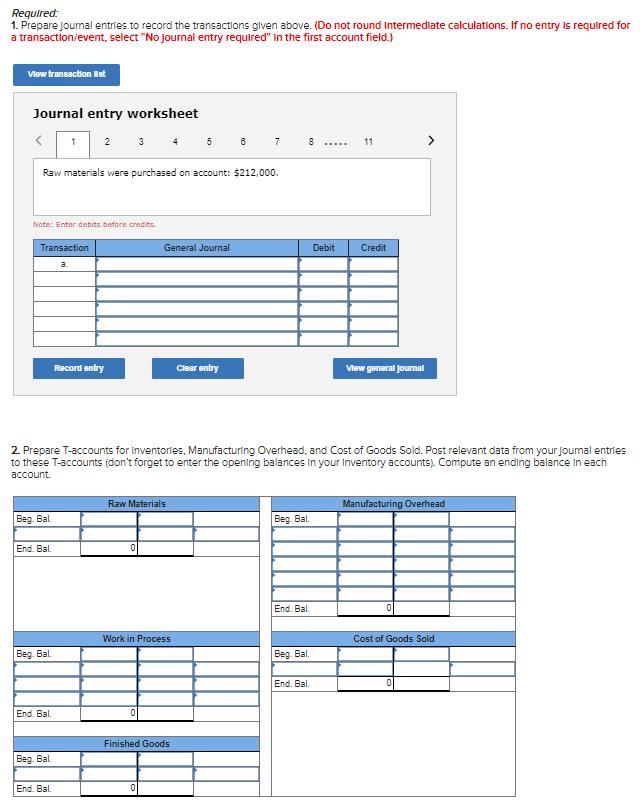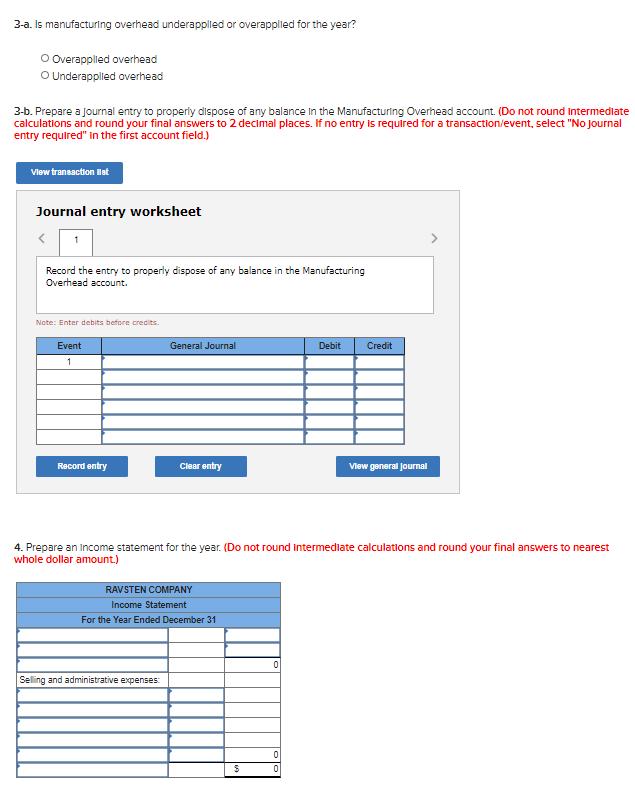Answered step by step
Verified Expert Solution
Question
1 Approved Answer
Ravsten Company uses a job-order costing system. On January 1, the beginning of the current year, the companys inventory balances were as follows: Raw materials
Ravsten Company uses a job-order costing system. On January 1, the beginning of the current year, the company’s inventory balances were as follows:
| Raw materials | $ | 19,000 | |
| Work in process | $ | 11,200 | |
| Finished goods | $ | 30,600 | |
The company applies overhead cost to jobs on the basis of machine-hours. For the current year, the company estimated that it would work 36,600 machine-hours and incur $166,530 in manufacturing overhead cost. The following transactions were recorded for the year:
- Raw materials were purchased on account: $212,000.
- Raw materials were requisitioned for use in production: $196,000 (80% direct and 20% indirect).
- The following costs were incurred for employee services:
| Direct labour | $ | 164,800 | |
| Indirect labour | $ | 28,200 | |
| Sales commissions | $ | 37,800 | |
| Administrative salaries | $ | 82,400 | |
- Heat, power, and water costs were incurred in the factory: $44,700.
- Prepaid insurance expired during the year: $13,000 (85% relates to factory operations, and 15% relates to selling and administrative activities).
- Advertising costs were incurred, $53,000.
- Depreciation was recorded for the year: $63,600 (90% relates to factory operations, and 10% relates to selling and administrative activities).
- Manufacturing overhead cost was applied to production. The company recorded 41,200 machine-hours for the year.
- Goods that cost $506,500 to manufacture according to their job cost sheets were transferred to the finished goods warehouse.
- Sales for the year totalled $727,900 and were all on account. The total cost to manufacture these goods according to their job cost sheets was $500,300.


Required: 1. Prepare journal entries to record the transactions given above. (Do not round intermediate calculations. If no entry is required for a transaction/event, select "No journal entry required" in the first account field.) View transaction st Journal entry worksheet 1 2 345 8 7 8 11 Raw materials were purchased on account: $212,000. Note: Enter debits before credits. Transaction General Journal Debit Credit View general journal Record entry Clear entry 2. Prepare T-accounts for inventories, Manufacturing Overhead, and Cost of Goods Sold. Post relevant data from your journal entries to these T-accounts (don't forget to enter the opening balances in your Inventory accounts). Compute an ending balance in each account. Raw Materials Beg. Bal End. Bal. 0 Manufacturing Overhead Beg. Bal End. Bal. Work in Process Cost of Goods Sold Beg. Bal. Beg. Bal End. Bal. 0 End. Bal. Finished Goods Beg. Bal End. Bal. 0
Step by Step Solution
★★★★★
3.37 Rating (163 Votes )
There are 3 Steps involved in it
Step: 1
Here are the journal entries and Taccounts with calculations Journal Entries 1 Raw Materials Debit 2...
Get Instant Access to Expert-Tailored Solutions
See step-by-step solutions with expert insights and AI powered tools for academic success
Step: 2

Step: 3

Ace Your Homework with AI
Get the answers you need in no time with our AI-driven, step-by-step assistance
Get Started


